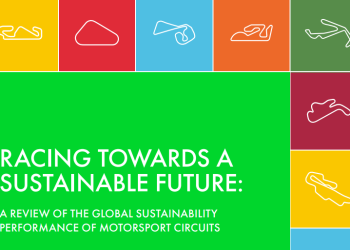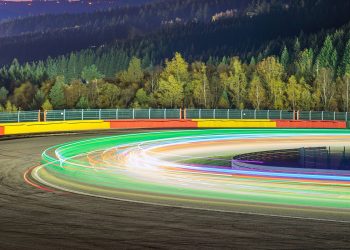Formula 1 and the FIA have unveiled the full 24-race calendar for the 2026 season, a year that promises more than just thrilling wheel-to-wheel racing—it ushers in a turning point for sustainability within motorsport
🔁 Streamlined Logistics for Lower Carbon Emissions
- Canadian Grand Prix moves to May: The Montreal race shifts from its traditional June date to May 24, aligning it with Miami to remove an extra transatlantic transport leg—significantly reducing logistical CO₂ emissions . F1 CEO Stefano Domenicali emphasized this change as part of a wider effort to build a calendar that’s more geographically efficient and environmentally thoughtful
- European leg restructured: The Monaco Grand Prix also moves earlier to early June, optimizing travel flow across the continent and further trimming carbon impact.
♻️ 100% Advanced Sustainable Fuel & Technical Revolution
The 2026 regulations introduce F1 cars powered entirely by advanced sustainable fuels—a watershed moment for the sport’s carbon reduction strategies. Complementary changes include:
- Larger ERS (Motor Generator Unit – Kinetic) output and removal of the MGU‑H, aimed at optimizing energy recovery and use efficiency
- Vehicles designed with active aerodynamics and shorter wheelbases for better efficiency
These engineering shifts support F1’s broader aim of net-zero racing by 2030, confronting the sport’s supply-chain footprint head-on .
🏁 Calendar Overhaul with Fresh Venues & Lost Icons
The 2026 line-up introduces the Madrid Grand Prix at the new “Madring”, marking a return of urban street racing in Spain, alongside Barcelona’s Catalunya GP. Meanwhile, Imola’s Emilia‑Romagna GP is dropped, allowing focus on more sustainable logistics and centralized travel hubs. The Zandvoort Dutch GP will end in 2026, giving room to optimize calendar flow and reduce event redundancy.
🧩 A 24‑Race Global Tour with Climate-Conscious Design
Starting in Melbourne (March 8) and concluding in Abu Dhabi (December 6), the series jumps across five continents. The schedule’s geographical routing—North America in May, Europe in summer, Asia and Americas later—dramatically cuts unnecessary freight and logistical carbon costs.
🌍 What This Means for Fans & the Planet
By reworking its logistics and pushing full sustainable fuel usage, F1 is not just greenwashing—it’s pivoting to genuine environmental responsibility. While critics point to remaining emissions from global travel, the 2026 calendar represents a significant structural move toward carbon reduction. It’s a pivotal season where racing performance and planetary performance take center stage.
As F1 revs up for 2026, teams, fans, and global audiences will watch not only the leaderboard—but also how racing evolution can drive real-world green innovation.
| Focus Area | Sustainable Move |
|---|---|
| Calendar routing | Travel-efficient race order (e.g., Canada‑Miami, Europe‑Asia-American swing) |
| Fuel & engineering | 100% sustainable fuels; upgraded ERS and active aero |
| Event waste | Continued elimination of single-use plastics, waste composting, UN “Sports for Climate Action” adherence |
| Net-zero targets | F1’s goal: climate-neutral by 2030 |
🌍 What This Means for Fans & the Planet
By reworking its logistics and pushing full sustainable fuel usage, F1 is not just greenwashing—it’s pivoting to genuine environmental responsibility. While critics point to remaining emissions from global travel, the 2026 calendar represents a significant structural move toward carbon reduction. It’s a pivotal season where racing performance and planetary performance take center stage.
As F1 revs up for 2026, teams, fans, and global audiences will watch not only the leaderboard—but also how racing evolution can drive real-world green innovation.



















